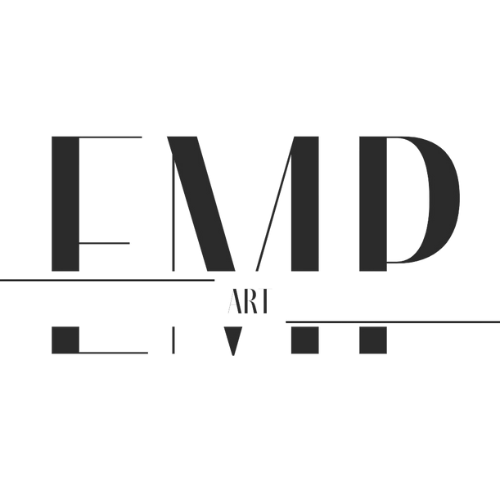What Makes a Great Abstract Painting?
Abstract art invites us into a world without clear boundaries — a world shaped by feeling, intuition, and movement rather than recognizable forms.
But with that openness comes a question many people (and even artists themselves) quietly wonder: What makes an abstract painting “great”?
In this blog, I’ll share reflections from my journey at EMP about how I recognize greatness in abstraction — and why technical skill, emotional honesty, and invisible energy all matter far more than perfection.
Emotional Resonance
Above all else, a great abstract painting makes you feel something.
It stirs a memory, a sensation, a shift — even if you can’t explain why.
You might feel:
A sudden stillness
An unexpected spark of energy
A quiet ache of familiarity
Greatness in abstraction isn’t about understanding with your mind — it’s about connecting through your heart and body.
At EMP, the most powerful pieces I’ve created are the ones that felt alive as they were being made — as if they carried an emotional charge that still hums quietly through the canvas.
Composition and Flow
Even in the most intuitive abstract works, composition matters.
There is a rhythm to the way shapes, lines, colors, and textures move across the canvas.
Strong composition creates:
Balance or intentional imbalance
A feeling of movement or pause
Visual paths that invite the eye to wander and discover
When you stand before a great abstract painting, your gaze doesn’t get stuck.
It travels.
It explores.
It breathes.
At EMP, I rarely plan compositions rigidly — but I trust my instincts to create visual rhythms that feel honest and alive.
Color as Emotional Language
Color is one of the most powerful emotional tools in abstract art.
A great abstract painting uses color not just for beauty, but for feeling.
Saturated reds might pulse with energy or grief
Soft blues might offer calm or spaciousness
Juxtaposed hues might create unexpected emotional contrasts
In powerful abstract work, color choices are never random.
They are part of the emotional architecture of the piece — whether the artist makes those choices consciously or through intuitive flow.
At EMP, color is often my first language before any form appears — the first thread I follow into the unknown.
Authenticity Over Perfection
One of the greatest myths about abstract art is that it is “easy” — a random splash of color or form without skill.
In truth, great abstract painting requires courage:
Courage to be seen without hiding behind clear narratives
Courage to honor imperfection as part of the beauty
Courage to create from intuition rather than imitation
You can often sense when an abstract piece is “forced” — when it is trying too hard to please, impress, or replicate something else.
Authentic work carries an invisible energy that no technical perfection can replace.
At EMP, my most honest pieces are the ones that come not from trying, but from surrendering — letting the universe move through me, imperfect and true.
Technical Mastery That Serves Emotion
While emotion and intuition lead, technical skill matters too.
Mastery of materials — understanding how paint flows, how layers interact, how colors behave — strengthens the artist’s ability to channel feeling into form.
In a great abstract painting:
The surface holds integrity
Textures feel intentional, not accidental
The artist’s control (or deliberate lack of control) supports the emotional story
Technical skill is not the point — but it is the scaffold that allows emotional truth to soar without collapsing.
Every piece at EMP is built from years of practice, experimentation, and joyful struggle with the materials — all in service of the unseen emotional architecture.
A Sense of Mystery
Finally, a great abstract painting leaves space for mystery.
It doesn’t explain everything.
It doesn’t resolve every question.
It invites you to return — and each time, discover something new.
This mystery keeps abstract works alive across time.
It allows each viewer to find their own story inside the piece, layered with their evolving emotions, memories, and dreams.
The best abstract paintings are not finished when the artist signs them.
They are finished again and again each time they are truly seen.
What Makes EMP’s Abstract Work Unique
At EMP, I create not to explain, but to offer a doorway.
Each piece is an invitation into an emotional landscape shaped by gratitude, surrender, and unseen energies flowing through moments of feeling.
When you engage with one of my works, I hope you feel not just color or form — but presence.
A reminder that you are allowed to feel fully, to be moved without needing explanation, and to find peace in the mystery.
